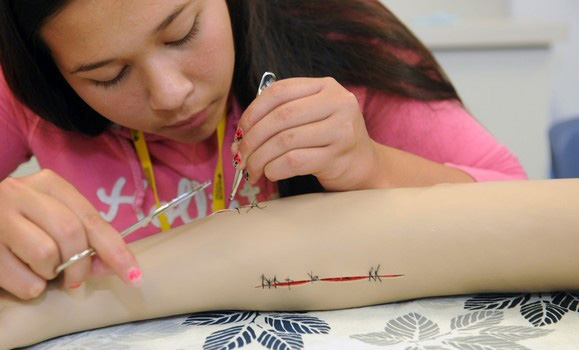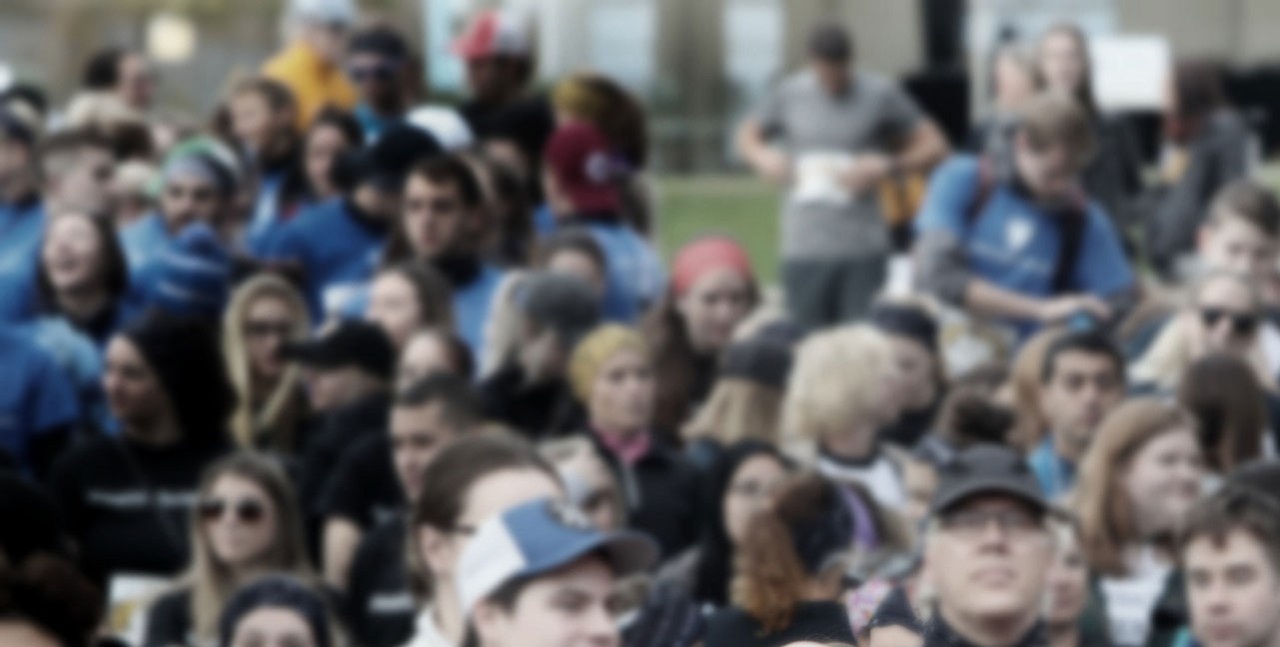News
» Go to news mainLooking back: How the Aboriginal Heath Sciences Initiative helped prospective students pursue careers in health

When Karlee Johnson filled out the application to attend the Aboriginal Health Sciences Initiative’s (AHSI) Junior University in the summer of 2012, she said it felt like she was actually filling out a real application to attend university.
“A week later, I got the email telling me that I got accepted,” Johnson, 20, recalled. “From then, I felt confident. Like, ‘Wow, a university has accepted me.’”
The Eskasoni First Nation resident said her week-long experience attending Junior University reaffirmed her longtime dream of becoming a family doctor. She recalled visiting the QEII hospital where the group met with physicians and explored different career options in Medicine. She also remembered learning how to do stitches.
“It was an unbelievable experience,” Johnson said. “To be able to have that opportunity to learn how to stitch a person, it was just amazing to me because I never thought I would get the opportunity until I got into medical school.”
The Eskasoni First Nation resident is now enrolled in her third year of the Bachelor of Science Medical Sciences program at Dalhousie University. She plans to attend medical school once she graduates in the spring of 2018.
Putting a career in health on prospective students’ radar
Johnson’s story is what the AHSI managing director Kara Paul was hoping for when she started working with AHSI back in 2009.
“The program’s main objective was to recruit more Indigenous students into Dal’s broad range of health programs,” Paul explained.
According to Paul, Junior University helped the AHSI take recruitment to the next level “so that Indigenous youth can experience different health professions, engage with the faculties at Dal and to experience a taste of university life.”
Offering the week-long Junior University camp to Indigenous youth was one way to spark their interest in the health sciences. Participants would stay on campus for a week to experience university life.
They lived in residence and attended daily lectures. They also got hands-on experience administering stitches or drilling into a plastic tooth to put in a filling.
Addressing a shortage of Indigenous health professionals
The origins of AHSI can be traced back to 2006 when Dal, at the request of a number of Nova Scotia Indigenous communities set up a committee to address a critical shortage of Indigenous health professionals.
“It had emerged from community members that few people were getting health degrees and returning to work in their communities,” explains Dr. Keith Taylor. The Dean of Science at the time, Taylor was asked to join the committee.
Instead, most Indigenous communities had a “revolving door” of non-Indigenous professionals who would set up practices early in their career and leave once they had experience. There was a need for concerted efforts to train Indigenous youth who would be more likely to return and spend a career working in an Indigenous community.
Taylor, currently a professor of mathematics and co-chair of Dal’s Indigenous Strategy Steering Committee, worked for three years with representatives from Indigenous communities and organizations across the Maritimes, faculty from Cape Breton University and others at Dal, in particular Fred Wein from the School of Social Work, to develop a plan. The creation of AHSI became the main component of that plan.
“Kara did a fantastic job of setting up a plan for what the office would do.”
AHSI staff often visited First Nation communities throughout the Maritime provinces to recruit students. Paul wanted to reach junior high school students in particular to encourage them to choose strategically the high school courses courses that would promote successful applications for Bachelor of Science programs at university.
“The later junior and early high school levels is where students are making decisions about what courses to take that influence what university program they apply to,” Paul explained.
Building supports for students
However, Paul realized there were a number of Indigenous students already in high school who were interested in pursuing a science degree who didn’t have the right prerequisites. There were also mature students who fell short of the admissions requirements.
In response to that need, the Aboriginal Health Sciences Success Program was created under the umbrella of the AHSI. The pilot project, which was based out of the Truro campus, helped Indigenous students earn the course requirements for admission into a Bachelor of Science program. Students also took university level courses that would go towards a university degree.
Sage Marshall, 19, from Potlotek First Nation in Cape Breton, signed up for the Aboriginal Health Sciences Success Program. She found taking courses with a cohort of Indigenous students made her more comfortable.
“Most of us came from living on reserves and communities so we all had that connection with each other,” Marshall explained. “It was easier for us to connect to our teachers as a group so it just made it a better overall learning experience.”
In addition to her outreach and recruitment efforts, Paul has offered support to current Indigenous Dal students interested in pursuing a degree in the health professions.
“While it’s important to spark interest in Indigenous youth and help create access to university programs, it’s equally important that students feel welcomed and supported while they are here,” Paul said.
“Indigenous students are tightly connected to their communities so the pull to home is strong. It’s vital that universities facilitate an Indigenous community within the campus community,” she explained.
Brent Young, a Dal grad with degrees in biochemistry and molecular biology and a Master of Science in Pharmacology, said Paul helped him with his med school application.
“I was completely in doubt that I would ever get into medical school or that I would ever be qualified,” Young, 25, recalled. “Her role was just being there to give me the reassurance that I am a very qualified candidate for medical school.”
From that point on, Young said Paul became his initial point of contact into the Indigenous community at Dal.
“Since I met Kara, I became a lot more involved in Faculty committees, student societies and everything else,” the Sydney, N.S. resident explained. “Kara really bridged that gap for me.”
Karlee Johnson also sought out the AHSI when she first moved into residence in the fall of 2014.
“Making that adjustment from Eskasoni to Halifax, I wouldn’t say it was a smooth transition,” Johnson said. “It was very difficult for me, especially in first year and second year as well.”
“I almost felt like it was culture shock. I didn’t know anybody. The only person I really knew from Halifax was Kara Paul,” she said.
“Without her support, I wouldn’t probably be in my third year of university right now,” Johnson explained. “She’s always made it clear that it’s possible to graduate from university.”
Next steps
During its eight year tenure, the AHSI built a foundation upon which the university plans to expand. The AHSI is wrapping up on March 31, and Dal will continue to expand its supports for Indigenous prospective and current students across the university.
Starting April 1, Paul will begin working with Dal's Student Affairs on a feasibility study exploring opportunities for a more collaborative model in Nova Scotia to enable access and support for Indigenous students interested in any field at the post-secondary level.
Recent News
- Bridging continents: Dal students to learn, share and connect in West Africa
- Partnership between UpLift and Public Health sees continued funding allocated for Youth Engagement Coordinators
- Dal Health grad students use podcasting to discover the people behind the science
- Nursing student closer to living out her dream of helping people thanks to support of new award
- Master of Nursing grad passionate about working in mental health and addictions
- MSc Audiology grad shifts career from entomologist to audiologist
- Occupational Science grad exploring concept of care farming
- Dal Crossroads continues 20 year legacy of student ‑led learning

